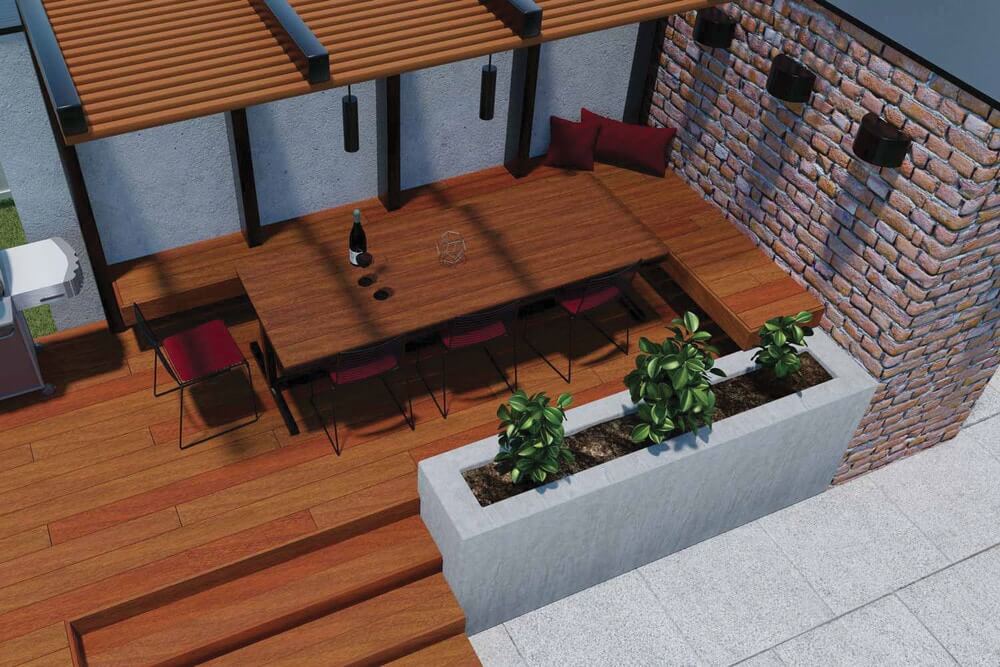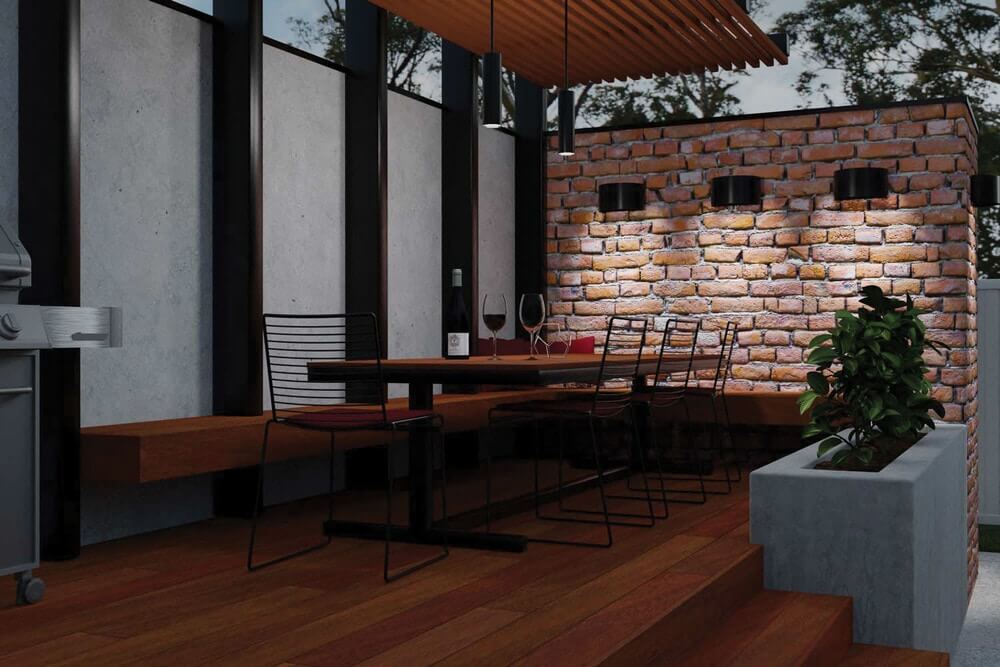Decks are subjected to the elements, foot traffic, pets and other animals, plus the weight of any items that may be stored there, so they must be strong and durable. When done correctly, a deck will not only add beauty to a home, but it can also add value. When building a deck for your home or business, it is important to take time to consider the various types of wood decking to ensure your deck will not only look beautiful, but that it will be able to withstand the stress of use. The types of wood decking include pressure-treated, native hardwoods, and tropical hardwoods.
Pressure-Treated Wood
Pressure-treated woods are the most commonly used decking material today because they are economical, aesthetically pleasing, and strong. It is easy to work with and widely available. Chances are if you choose another material for the deck itself, you will still be using pressure-treated wood for the structural support, due to the fact that other options are either too weak, or too costly. Southern yellow pine is a commonly used pressure-treated wood for decking. While it still holds a good portion of the market share, it is quickly losing ground in favor of other options, likely due to the maintenance factor associated with keeping the wood in good condition. It must be cleaned and sealed on a regular basis to extend its life.
Infusing the wood with one or more water-based preservatives using a pressure chamber creates pressure-treated wood. There are a few different options for preservatives, including: Sodium Borate (SBX), Copper Azole (CA), Alkaline Copper Quat (ACQ), and Chromated Copper Arsenate (CCA). CCA was removed from most residential applications in December 2003. Copper is used in the preservatives as a fungicide.
Southern yellow pine is the common pressure-treated wood because it can be treated with effective penetration without incising the wood. Incising involves making small slits on the surface of the wood to allow the preservative to penetrate deep into the layers of wood.
Native Wood Decking
The term native wood refers to lumber harvested anywhere in North America. Cedar is one of the most common native wood choices when building a deck, although to be clear it’s a softwood and not a hardwood as many of the other examples listed below are. That term “softwood” doesn’t necessarily reflect how hard the wood happens to be or how durable it is. It refers to the species from which it is taken. Cedar is a coniferous species. So, that’s what makes it a softwood. All wood taken from a coniferous species, or “evergreen” species, is referred to as softwood.
Cedar has a rich color, grain, and texture, giving it a beautiful appearance. Beyond aesthetics, it has a stability and durability that is very reliable, as well as a natural resistance to the elements. It will lay flat, remain straight, and provide a solid base for paint and other finishes. It also holds fasteners well, compared to other woods.
Tropical Hardwood Decking
The term tropical hardwood refers to lumber harvested anywhere outside of North America. Commonly used tropical hardwoods include ipe and camaru. These woods are used because of their similarities to teak, which is generally not used for decking because of the expense associated with it.
Ipe is also known as Brazilian walnut. Generally dark brown in texture with some occasion lightly color stripes, this wood is incredibly dense, and strong, and has a fine texture. Due to the density and hardness of the wood, it is more difficult to cut, which makes the installation more labor intensive. Using this wood, you can expect your deck to last at least 25 years. Some name brand products have warranties lasting up to 40 years. If you choose not to seal the wood, it will weather to a light silver or gray color, with little to no splintering. This wood is imported from Brazil and Central America.
Camaru is much like ipe. It is also a very hard wood, dense, and strong. Generally, it is an orangish-brown color, and when left unsealed will also turn silver with weathering. This wood is imported from South America.
Other tropical hardwood choices for decking include mahogany and Brazilian redwood.
The type of wood decking you choose will be based on the look you are going for, your budget, the maintenance and care you are willing to invest over the long term, and the weather conditions in your area. What works best for one person may not work best for someone else.
![[object Object]](png/logo-blue9b01.png)

